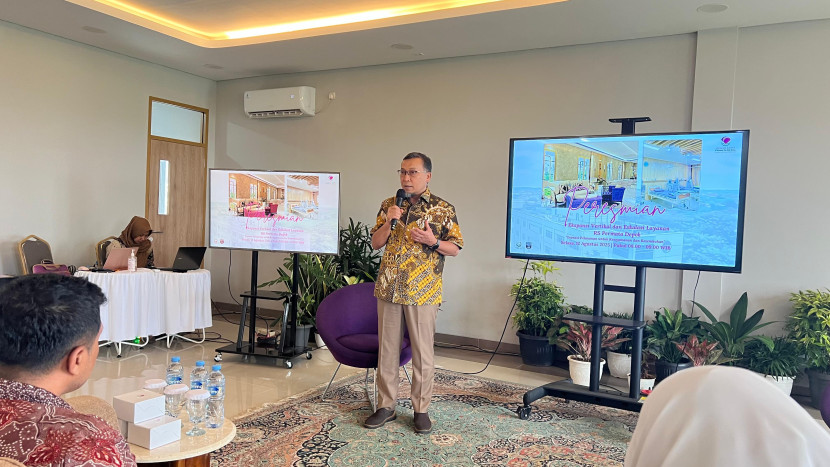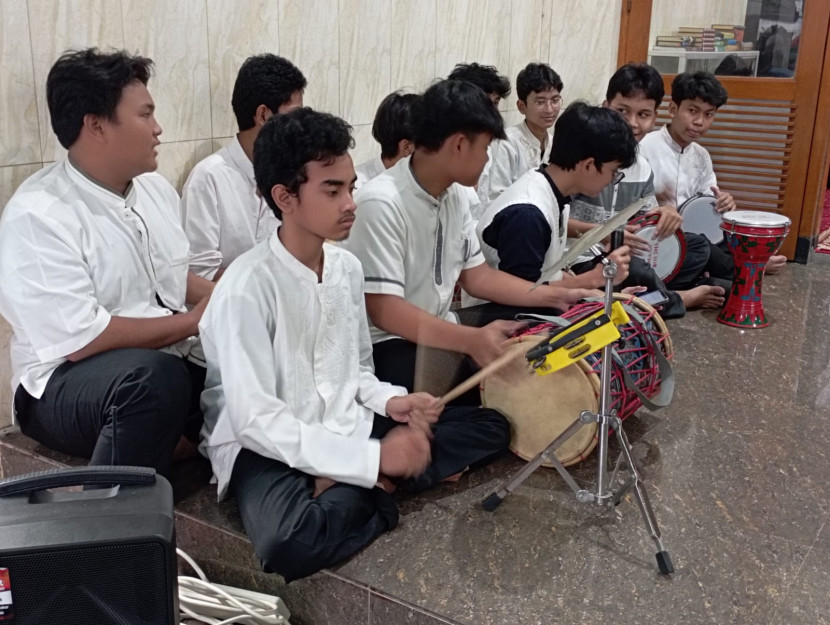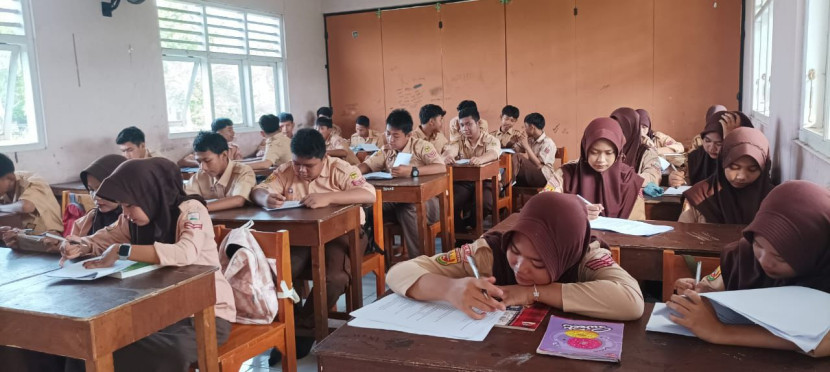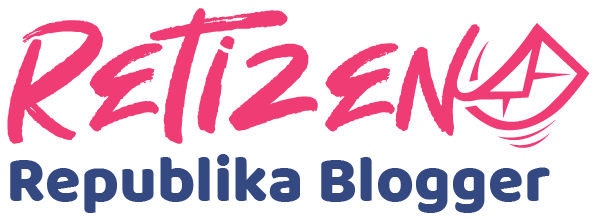An Oasis in the Bureaucratic Desert: The Story of a School Principal Who Breaks the Mold

TOPNEWS62.COM, JAKARTA – Friday October 03,2025 School principals are often called the "captains" of education. The direction of policy, the learning environment, and the morale of teachers and students are all steered by their leadership. But does the leadership practiced by Indonesian principals today truly align with the leadership theories we study in class? Or are they constrained by an overwhelming burden of administration and bureaucratic pressure?
This article is written by: Trisia Loli Maulana (Submitted to fulfill the assignment for the Leadership & Decision Making Course, Lecturer: Dr. Dr. Dra. Hj. Neng Nurhaemah, M.Pd., S.Pd.)
Theory in the Lecture Hall: From Transformational to Servant Leadership
In educational leadership theory, we encounter several ideal approaches:
- Transformational Leadership, which emphasizes a grand vision, motivation, and changing the school culture (Bass, 1990).
- Instructional Leadership, where the principal focuses on directing the quality of teacher instruction and student learning outcomes (Hallinger, 2011).
- Situational Leadership, which adjusts the leadership style according to the conditions and needs of subordinates (Hersey & Blanchard, 1988).
- Servant Leadership, which focuses on leadership based on dedication, service, and empowering the school community (Greenleaf, 1977).
- Distributed Leadership, where leadership doesn't solely rest on the principal but is shared with teachers, staff, and even students (Spillane, 2006).
On paper, these theories sound wonderful. A principal is not just a manager but an inspirer who encourages the birth of innovation and independence. But does the reality on the ground align with these ideas?
Reality Check: Principals Trapped in Administration
Unfortunately, many principals in Indonesia remain locked into a bureaucratic mindset. Data from the Ministry of Education, Culture, Research, and Technology (Kemendikbudristek) in 2023 showed that over 60% of a principal's time is consumed by administrative matters, ranging from reporting on the use of School Operational Assistance (Dana BOS) funds to preparing for accreditation. It’s no wonder the instructional leadership function, which should focus on learning, is often neglected.
This phenomenon is reinforced by a study by Suyanto & Jihad (2021), which found that most principals in the regions admitted difficulty balancing administrative roles with pedagogical duties. Consequently, the transformational leadership that drives shared vision and innovation often remains mere jargon.
The Gap Between Theory and Practice
The disparity between leadership theory and practice in the field can be seen in several aspects:
- Vision Dimmed by Routine: Many principals have excellent visions, but their energy is drained by managing documents. Ultimately, the vision only stops at the bulletin board and never permeates the classroom.
- Weak Instructional Leadership: Ideally, the principal should be a coach for teachers. However, reality shows that classroom supervision is often a formality, focused more on filling out forms than providing constructive feedback.
- Lack of Leadership Distribution: The theory of distributed leadership stresses the importance of sharing responsibilities. Sadly, many schools still operate under a hierarchical pattern: the principal as the sole controller, and teachers as implementers. As a result, teacher creativity is often stifled.

A Light Amidst the Challenges: Good Practices in Indonesia
Despite these issues, many principals have successfully translated theory into real-world practice.
For instance, in the Kemendikbudristek’s Sekolah Penggerak (Driving School) program, some principals have dared to reduce administrative meeting hours and replace them with reflective learning forums with teachers. In several elementary schools in Yogyakarta and West Java, principals have even formed learning communities where teachers observe each other's teaching practices and provide feedback.
Another example comes from SMAN 2 Semarang, where the principal encourages teachers to lead cross-subject projects based on local issues—from the environment to entrepreneurship. This practice demonstrates how distributed leadership and transformational leadership can go hand in hand.
Solutions and Recommendations: Restoring the Principal's True Spirit of Leadership
If we want principals to truly become organic leaders born from the community and capable of driving change, several strategic steps can be taken:
- Reduce the Administrative Burden: The government needs to accelerate the digitalization of reporting systems and reduce layered documents. Principals must be given more space to mentor teachers and students.
- Continuous Leadership Training: Not just short workshops, but long-term coaching and mentorship that emphasizes instructional practice, change management, and moral leadership.
- Distribute Leadership: The culture of a single hierarchy must shift. Teachers, students, and even parents need to be involved in decision-making. This is not just about efficiency, but about building a sense of ownership.
The leadership theories we study in class are not merely exam material; they are a mirror to assess the reality of our education. Currently, principals in Indonesia face a dilemma: on one hand, they are demanded to be bureaucratic managers, and on the other, they are expected to be learning leaders.
If we can reduce the administrative load, strengthen leadership training, and foster a participatory culture, principals can return to their true essence: moral leaders who inspire teachers, mobilize students, and establish the school as a locus of social change.
Ultimately, the principal’s leadership is not about power, but about the moral responsibility to deliver fair, meaningful, and liberating education for all Indonesian children.
Reference
- Bass, B. M. (1990). From transactional to transformational leadership: Learning to share the vision. Organizational Dynamics.
- Hallinger, P. (2011). Leadership for learning: Lessons from 40 years of empirical research. Journal of Educational Administration.
- Spillane, J. P. (2006). Distributed leadership. Jossey-Bass.
- Suyanto & Jihad, A. (2021). Kepemimpinan Kepala Sekolah dalam Meningkatkan Mutu Pendidikan di Indonesia. Jurnal Manajemen Pendidikan.
- Kemendikbudristek (2023). Laporan Tahunan Pendidikan Indonesia.
- Greenleaf, R. K. (1977). Servant Leadership. Paulist Press.

Founder topnews62.com Portal Berita yang Komperenshif, Akurasi yang menyejukan dan mencerdaskan terkait Wisata serta Gaya Hidup zaman Now

 Gaya Hidup - 03 Oct 2025
Gaya Hidup - 03 Oct 2025




